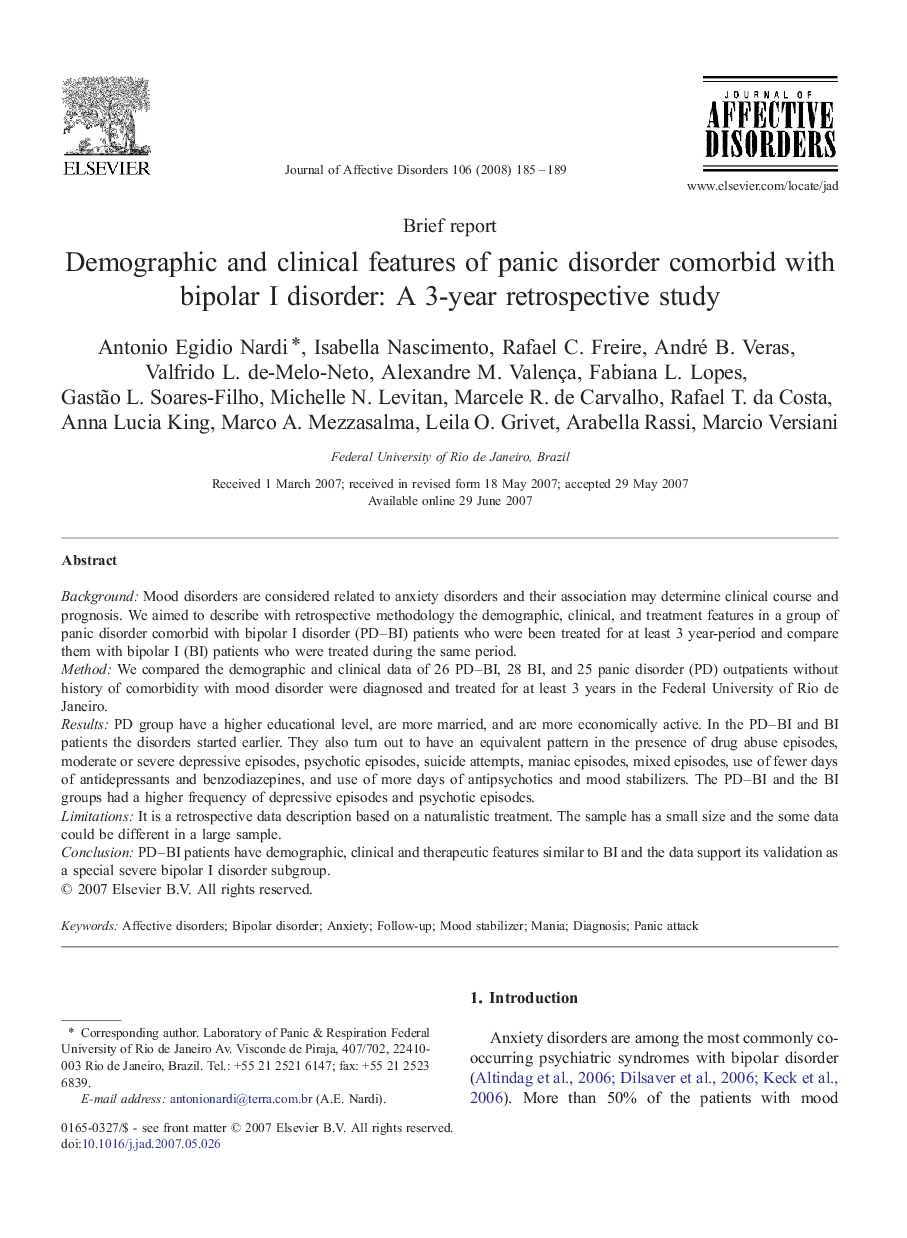| Article ID | Journal | Published Year | Pages | File Type |
|---|---|---|---|---|
| 4187686 | Journal of Affective Disorders | 2008 | 5 Pages |
BackgroundMood disorders are considered related to anxiety disorders and their association may determine clinical course and prognosis. We aimed to describe with retrospective methodology the demographic, clinical, and treatment features in a group of panic disorder comorbid with bipolar I disorder (PD–BI) patients who were been treated for at least 3 year-period and compare them with bipolar I (BI) patients who were treated during the same period.MethodWe compared the demographic and clinical data of 26 PD–BI, 28 BI, and 25 panic disorder (PD) outpatients without history of comorbidity with mood disorder were diagnosed and treated for at least 3 years in the Federal University of Rio de Janeiro.ResultsPD group have a higher educational level, are more married, and are more economically active. In the PD–BI and BI patients the disorders started earlier. They also turn out to have an equivalent pattern in the presence of drug abuse episodes, moderate or severe depressive episodes, psychotic episodes, suicide attempts, maniac episodes, mixed episodes, use of fewer days of antidepressants and benzodiazepines, and use of more days of antipsychotics and mood stabilizers. The PD–BI and the BI groups had a higher frequency of depressive episodes and psychotic episodes.LimitationsIt is a retrospective data description based on a naturalistic treatment. The sample has a small size and the some data could be different in a large sample.ConclusionPD–BI patients have demographic, clinical and therapeutic features similar to BI and the data support its validation as a special severe bipolar I disorder subgroup.
